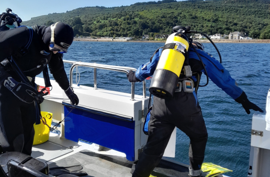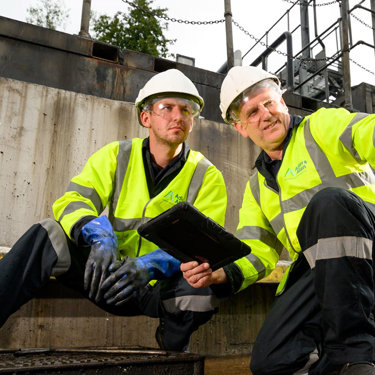5 environmental considerations when making a fire response plan
Published: 18 June 2020
By: Bill Atkinson, Chief Scientific Adviser
In the year ending June 2019 there were just over 11,000 fires in non-domestic buildings annually in the UK. Risk assessment and emergency planning is key to minimising damage and getting your operation back up and running quickly and compliantly after a fire.
We know from previous incidents (such as the Buncefield fire) that there is a risk of severe pollution from fires caused by firewater run-off into groundwater and spills of hazardous materials. The legal consequences of this and the clean-up bill, not to mention the bad PR and loss of business, can be very costly. Site operators should therefore develop robust incident response plans. These can be shared with the fire service, who can sometimes hold these on their systems, so they know what to do when they get to site.
Here’s five environmental considerations when making a fire response plan.
1. Risk assessment
Site operators should first carry out a risk assessment to identify areas where all three of the below are present:
Source – Pathway - Receptor
The source might be firewater, the pathway may be a surface water drain and the receptor a local river.
2. Risk reduction strategies
Where an environmental risk is identified, site operators need to consider ways to reduce the risk. These fall into four categories:
- Prevention – prioritising preventing fire on site
- Detection – ensuring fast detection and action if a fire does start
- Containment – site operators should consider installing facilities for containing firewater such as bunds, storage lagoons or chambers, shut-off valves and isolation tanks or areas
- Mitigation – develop suitable firefighting strategies with the fire service such as a controlled burn
3. Firewater containment
The first and easiest strategy to ensure firewater doesn’t enter a receptor is to identify where surface water drains are. Guidance suggests painting drain covers a different colour on plans to differentiate surface drains from foul water drains.
Then site operators need to make a plan for where firewater will go. The first thing to do is consider the topography of your site. Firewater will find its way to the lowest point of your site. The simplest option is to designate this area as a sacrificial lagoon. In the event of a fire sandbags could be deployed around this area to contain the firewater so it can be disposed of compliantly.
Other options for containing firewater are:
- Containment lagoons
- Tanks
- Pits and trenches
- Portable tanks
Each option should be considered in relation to the site and its potential effectiveness. Consideration should be given to whether another form of containment is required in the event of an emergency to prepare them (such as moving portable tanks into place).
4. Reducing risk from spills
If your site has hazardous materials stored on it, spillages caused in the event of a fire can have significant environmental impact. It is not just materials like chemicals and oil that can pose a threat, non-hazardous products such as milk, fruit juice and beer can cause significant environmental damage if allowed to escape.
The importance of ensuring secondary containment bunds around tanks storing hazardous materials is key to reducing the risk of spills during a fire. Should a breach occur, temporary tanks or containment lagoons can be used to contain spills until the material can be assessed and either removed and disposed of or returned to its original tank.
Shut-off valves or penstocks can isolate part or the whole of a site to retain spillages. You need to consider the capacity of the drainage system and ensure they are regularly maintained to guarantee their effectiveness in the event of a fire.
Automatic sensors and closure devices may be used on sites where an incident might not be immediately noticed.
5. Check your separators
Don’t forget to have your separators serviced after a fire to ensure firewater hasn’t entered into the system. The presence of degreasing agents or detergents in firefighting foam can significantly reduce the efficiency of separators in treating hydrocarbon contaminated water.
An environmental risk reduction specialist such as Adler and Allan will be able to work with you to assess the risks on your site and produce a suitable fire response plan. Being prepared will reduce the risk to the environment and your operation.
More from our Knowledge Hub
 News
NewsAdler & Allan announces new investment from Private Equity at Goldman Sachs Alternatives
 Insights
InsightsDemystifying the new biodiversity net gain legislation
 Case study
Case studyBlue carbon habitat suitability assessments in Scotland as part of Carbon Neutral Islands project
 Insights
InsightsChanges to ESOS reporting system and compliance notification deadline extended to 6 August 2024
Keep your business compliant and protect the environment while reducing the risk of operational downtime
Find out how Adler and Allan reduce your risk and support you on your journey to Net-Zero through the management and maintenance of assets.
Contact our experts

